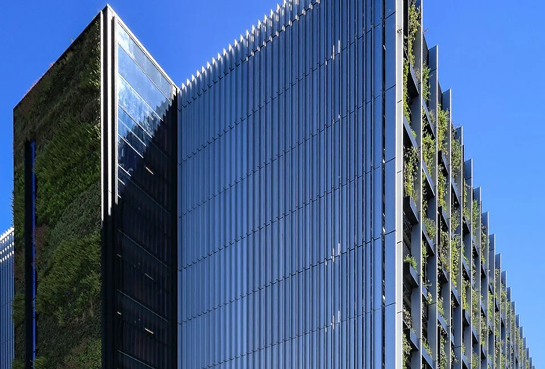
Latest
News
Sustainability in Construction: From complexity to simplicity

Topics
- About Maple (100)
- Car Parks (90)
- Office and Retail (47)
- Government (39)
- Rainscreen (36)
- Louvres (30)
- Education (24)
- Residential (24)
- Brise Soleil (22)
- Health (20)
- HSEQ (18)
- Commercial Blinds (16)
- Sustainability (15)
- Data centres (10)
- Pre-Construction services (10)
- Architectural facade (7)
- North West (2)
Working sustainably and looking after our planet sounds great, however, it is often easier said than done.
In our previous HSEQ article, we discussed how Maple Façades are making progress in becoming Net Zero by 2030. However, it took a lot of effort and hard work to get where we are now. In this article, we’re sharing our journey from complexity to simplicity, to inspire others to embark on their own path to sustainability.
Our journey was sparked by an increase in client questions around the sustainability of our products and services coupled with a genuine desire by the Maple team to take steps which would benefit the environment and make our business more sustainable.
We began by wanting to gain a deeper understanding of our environmental impact through collating information and data from numerous sources. This would enable us to find the accurate measurement of our carbon emissions through Carbon Footprint Reports, Life Cycle Assessments (LCA) and Environmental Product Declarations (EPD). This resulted in the following three challenges:
CHALLENGE 1. DEVELOPING KNOWLEDGE OF SUSTAINABILITY
Beginning your journey to sustainability can be daunting, it’s often a complex process involving new jargon and various acronyms, so a clear strategy and prioritisation is key. At the beginning, like most organisations, we had a basic understanding of environmental and sustainable issues so we assumed that this would be a simple case of collating and analysing data and producing reports which could help identify opportunities for reducing our impact .
We had implemented a range of measures aimed at reducing our environmental footprint but did not know the extent of the actual benefits or the carbon emission savings being made. To improve our understanding, we enrolled in various training courses and webinars such as 'Sustainability School’ and EPD Bootcamp which helped us filter out the information we needed.
CHALLENGE 2. USING DATA EFFECTIVELY
Once we learned about what we needed to report, we soon realised we did not have enough accurate or reliable data sources on which to report. For example, there were large data gaps in our 2021 Carbon Report as we had no information for many of the scope activities around purchased goods and services. This had a knock-on effect on the overall picture of our carbon emissions and the Life Cycle Assessments of our products.
As part of our ISO-14001 certification, we had a simple LCA in place which, on reflection, was inadequate when considering the detail necessary in the production of Environmental Product Declarations. The level of detail required exposed areas requiring development so that meaningful information could be collated. With the assistance of our selected EPD Partner, Blue Marble, we created detailed assessments for a range of core products. This information is now being used as part of our pre-construction and value engineering services to assist clients in understanding the impact of our products. We have also recently launched our first EPD for our Continuum System as a result.
CHALLENGE 3. EMBRACING DIGITALISATION
Creating manual means of collating data meant many hours spent building and populating information, which could not be sustained. Our next challenge was identifying how could we create simplicity from complexity – the answer soon became clear that we needed to digitalise as much of the data collation and analysis as possible.
To assist with the data reporting, we have automated data collection from our main operations system such as an automated mileage tracker which provides the CO2 emission calculations between two locations. This information is then fed into our sustainability report which simplifies the process and saves time.
The digitalisation of our data collection has accelerated our journey to sustainability as it’s enabled us to create detailed assessments for a range of our core products which, in turn, will produce independently verified EPDs.
